The leader of the noble Minamoto clan, Minamoto no Yoshitomo was killed in the bath on, February 11, 1160.
In the sleepy region of Mihama Cho on the Chita Peninsula some 35 kilometers south of Nagoya City, stands a mid-seventh century temple of the Shingon Buddhist sect. The ancient Omidoji Temple, also known as Noma Daibou is also famous for having been the site of the home, and in particular the bath house where the great warrior, Minamoto no Yoshitomo, father of the first of the Kamakura Shogun, Yoritomo and the warrior Yoshitsune, was killed.
In 1159, the Minamoto and the Taira clans, once close noble houses, had become bitter enemies. Yoshitomo had been defeated in the Heiji Rebellion, a short two week civil war regarding the Imperial political power struggles, and fled the capital, Kyoto, for modern day Aichi Prefecture’s Chita Peninsula. Yoshitomo was staying in the village of Noma at the residence of one Osada Tadamune when the father-in-law of one of his own retainers betrayed Yoshitomo to his enemies for a reward.
Having been informed of his whereabouts, Yoshitomo’s enemies made their way to the homestead while the head of the Minamoto Clan was relaxing in a hot bath on that cold winter’s night,….and attacked.
Wet, naked and unarmed, Yoshitomo was an easy target. Surrounded by the enemy, his last words were “If I had even a wooden sword,…” before being slain. His head was taken and washed in a small pond nearby, which has since been known as the Chi No Ike, or Pond of Blood. The remains of the bathhouse itself can also still be seen.

Minamoto no Yoshitomo’s grave site is enclosed by a low stone wall, and located right alongside the temple’s main hall. Surrounding Yoshitomo’s central grave are the graves of his retainer, Kamata Masaie who on discovering the plot was stabbed twice by the traitor, and also that of the third son of Oda Nobunaga, Oda Nobutaka, who took his own life at Noma Daibou partially in protest of having been ousted from Gifu Castle in 1583 in a conflict with Toyotomi Hideyoshi, who had recently usurped Nobutaka’s father’s power.
As the ill-fated Yoshimoto’s final words were supposed to have been a plea for at least a wooden sword with which to face his attackers, modern day visitors to the noble warriors’ graves leave gifts of wooden swords on Yoshitomo’s tomb in the belief that those who dedicate a sword will have their prayers answered. Because of this, the grave itself is always covered in a variety of wooden swords. A small kiosk at the temple sells small wooden sword shaped stakes for 500 yen.
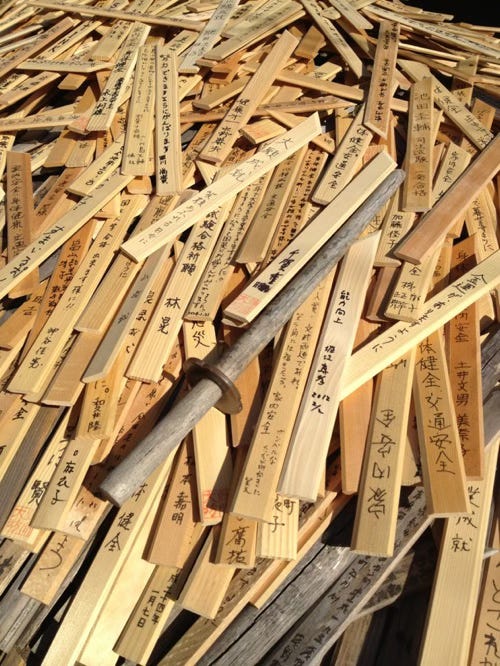
The Noma Daibou’s main worship hall, the Kyakuden, is designated an Important Cultural Property, and the Bonsho Prayer Hall is a Prefectural Cultural asset. The Prayer hall’s entrance way is of additional interest, as it was apparently formerly a part of the reception hall at Hideyoshi’s sumptuous Fushimi Momoyama Castle.
Between the temple’s Kyakuden and the Bonsho halls is a gate erected in 1190 by the first Shogun, Minamoto no Yoritomo in memory of his slain father, and a drum tower built by the Fifth Kamakura Shogun, Fujiwara Yoritsugu in honor of his ancestor.
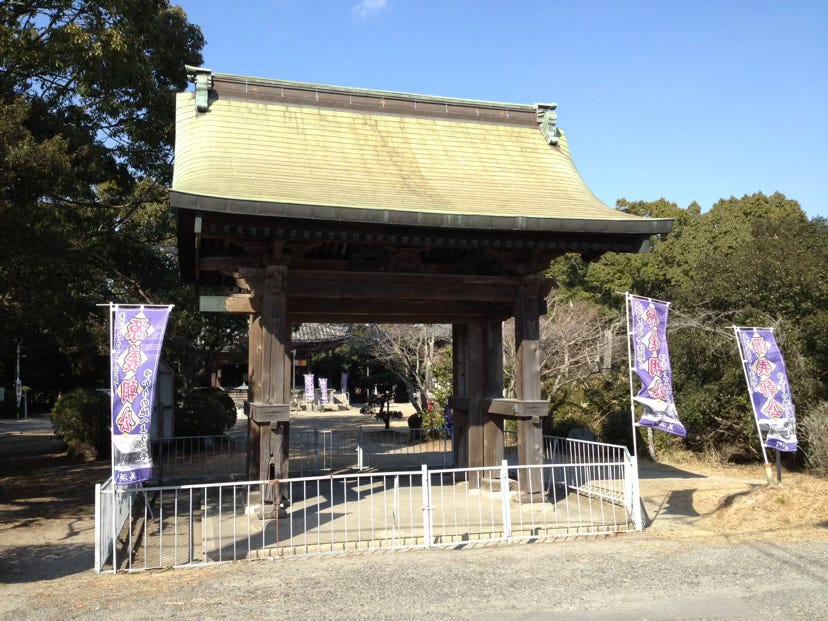
Noma Daibou retains a slightly spooky presence. This is where history happened. Not much seems to have changed in the 865 years since Minamoto No Yoshitomo fled here hoping to find sanctuary, only to lose his life.




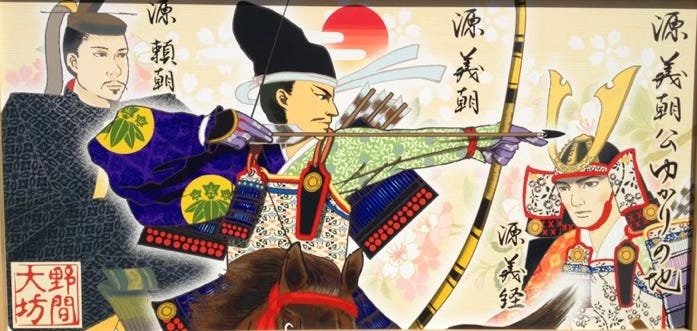
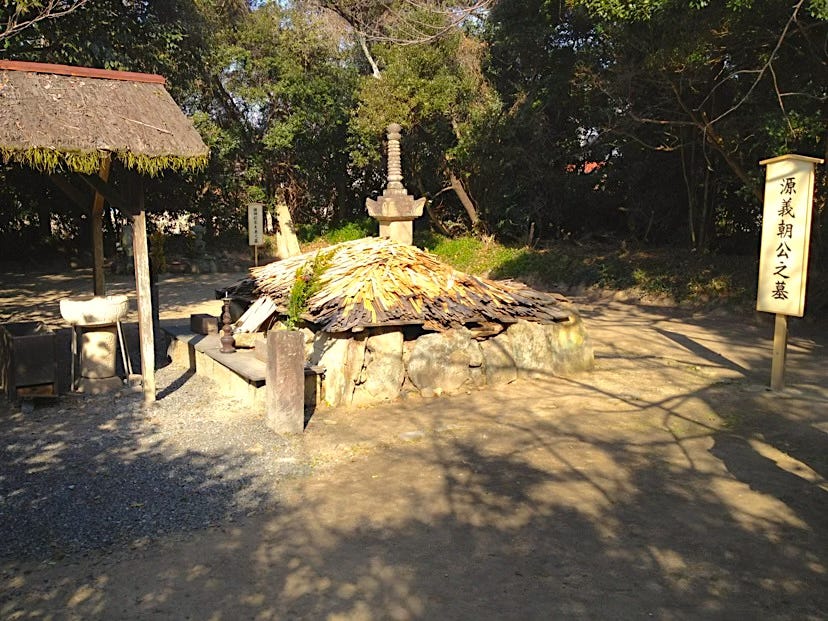
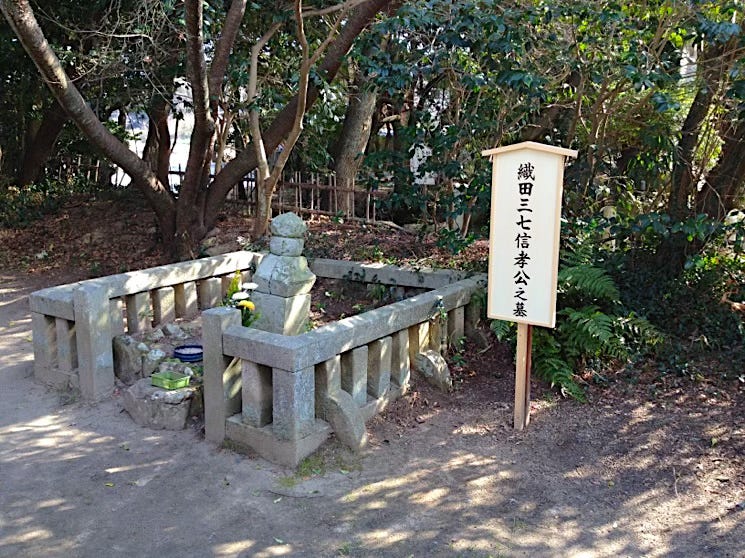


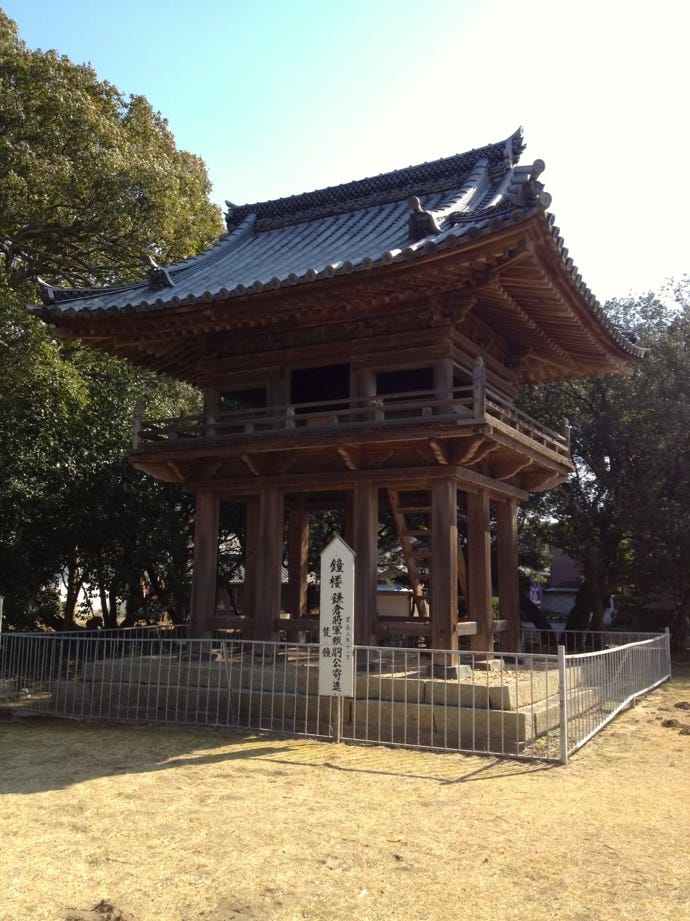
Something similar happened to Yoshitomo's brother Tametomo, who was taken prisoner while in the bath after the Hogen Disturbance of 1156. And to Taira no Moritsugu, also captured while taking a bath after the Genpei Wars of 1185. And Yoshitomo's grandson Minamoto no Yoriie, murdered in the bath in 1204. And Hosokawa Masamoto, murdered in the bath in 1507.
Clearly the lesson here is this: If you're a samurai, *never take a bath*.